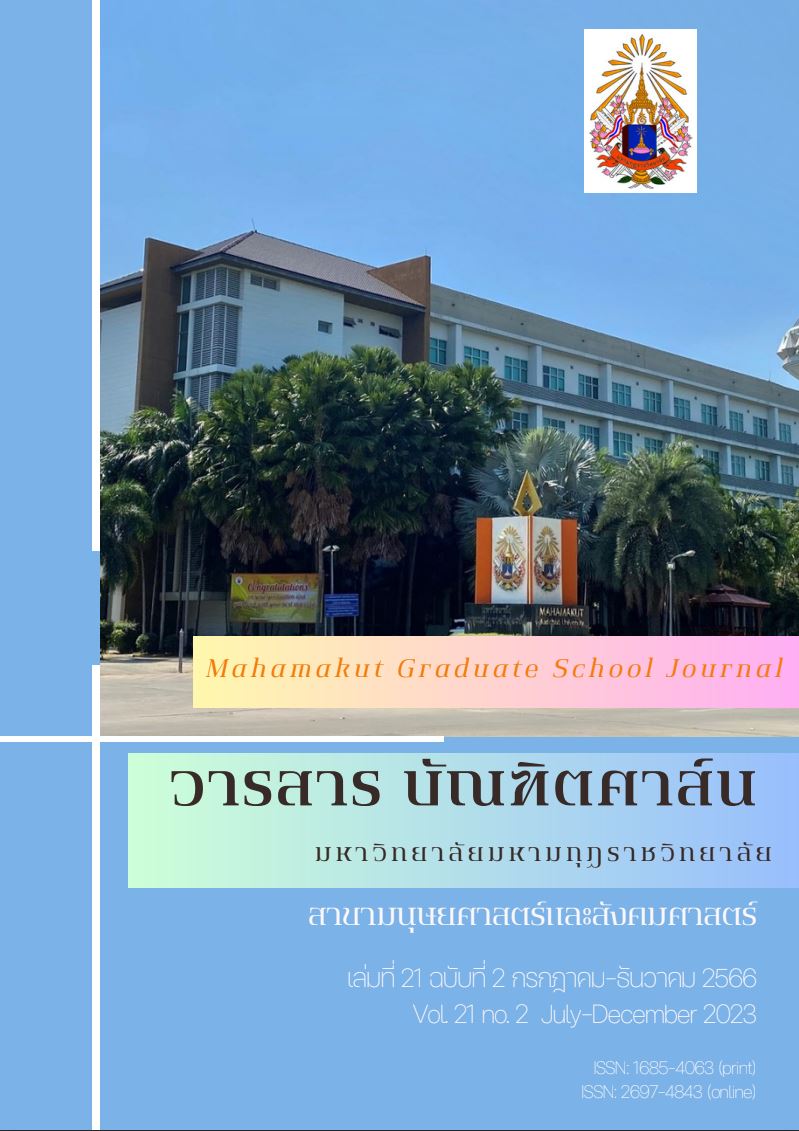กลยุทธ์การบริหารโรงเรียนคุณภาพประจำตำบลของโรงเรียน สังกัดสำนักงานคณะกรรมการการศึกษาขั้นพื้นฐาน
คำสำคัญ:
กลยุทธ์การบริหาร, คุณภาพประจำตำบลบทคัดย่อ
ดุษฎีนิพนธ์นี้มีวัตถุประสงค์เพื่อ 1) ศึกษาสภาพของการบริหารโรงเรียนคุณภาพประจำตำบลของโรงเรียน สังกัดสำนักงานคณะกรรมการการศึกษาขั้นพื้นฐาน 2) วิเคราะห์จุดแข็ง จุดอ่อน โอกาสและภาวะคุกคามของการบริหารโรงเรียนคุณภาพประจำตำบลของโรงเรียน สังกัดสำนักงานคณะกรรมการการศึกษาขั้นพื้นฐาน 3) พัฒนากลยุทธ์ของการบริหารโรงเรียนคุณภาพประจำตำบลของโรงเรียน สังกัดสำนักงานคณะกรรมการการศึกษาขั้นพื้นฐาน และ 4) ประเมินและรับรองกลยุทธ์การบริหารโรงเรียนคุณภาพประจำตำบลของโรงเรียน สังกัดสำนักงานคณะกรรมการการศึกษาขั้นพื้นฐาน กลุ่มตัวอย่างที่ใช้ได้แก่ โรงเรียนประถมศึกษาทั่วประเทศที่เป็นโรงเรียนคุณภาพประจำตำบล จำนวน 364 โรงเรียน โดยใช้วิธีวิจัยแบบผสม เครื่องมือที่ใช้ได้แก่แบบสัมภาษณ์กึ่งโครงสร้าง แบบสอบถาม แบบตรวจสอบและประเมินความเหมาะสม ความเป็นไปได้ และแบบประเมินและรับรองกลยุทธ์ วิธีการทางสถิติที่ใช้ใน การวิเคราะห์ข้อมูลคือ ค่าความถี่ ร้อยละ ค่าเฉลี่ย ค่าส่วนเบี่ยงเบนมาตรฐาน ค่าดัชนี PNI Modified และการวิเคราะห์เนื้อหาเชิงบรรยาย
ผลการวิจัยพบว่า
- สภาพปัจจุบันของการบริหารโรงเรียน มีการดำเนินงานของสภาพแวดล้อมภายใน ด้านกระบวนการ (PROCESS) อยู่ในระดับมากและมีค่าเฉลี่ยสูงสุด รองลงมาคือด้านกระบวนการบริหาร (PIE Cycle) ด้านปัจจัยนำเข้า (INPUT) ด้านผลผลิต (OUTPUT) ด้านผลลัพธ์ (OUTCOME) ตามลำดับ และมีสภาพแวดล้อมภายนอกที่เอื้อต่อการบริหาร อยู่ในระดับมากและมีค่าเฉลี่ยสูงสุด คือด้านเทคโนโลยี รองลงมาคือด้านเศรษฐกิจ ด้านสังคม ด้านการเมืองและนโยบายของรัฐบาล ตามลำดับ
- จุดแข็งด้านปัจจัยนำเข้า (INPUT) ได้แก่ บุคลากร จุดแข็งด้านกระบวนการ (PROCESS) ได้แก่กระบวนการบริหาร และกระบวนการนิเทศและติดตามประเมินผล จุดแข็งด้านผลผลิต (OUTPUT) ได้แก่ผู้เรียนมีคุณลักษณะที่พึงประสงค์ จุดแข็งด้านกระบวนการบริหาร (PIE Cycle) ได้แก่การประเมินผล การวางแผนและการนำแผนสู่การปฏิบัติ ส่วนจุดอ่อนด้านปัจจัยนำเข้า (INPUT) ได้แก่วัสดุอุปกรณ์ สื่อ เทคโนโลยี แหล่งเรียนรู้ และงบประมาณ จุดอ่อนด้านผลผลิต (OUTPUT) ได้แก่ผู้เรียนมีทักษะที่จำเป็นในศตวรรษที่ 21 และผู้เรียนมีความรู้ตามหลักสูตร จุดอ่อนด้านผลลัพธ์ (OUTCOME) ได้แก่ผู้เรียนเป็นคนดีคนเก่ง มีความสุขและมีงานทำ และโรงเรียนเป็นที่ยอมรับของชุมชน จุดอ่อนด้านกระบวนการ (PROCESS) ได้แก่กระบวนการจัดการเรียนการสอน นอกจากนี้ยังพบว่าด้านเทคโนโลยีและด้านเศรษฐกิจเป็นโอกาส ด้านสังคม ด้านการเมืองกฎหมายและนโยบายของรัฐบาล เป็นภาวะคุกคาม
เอกสารอ้างอิง
จินตนา เทียมทิพรและคณะ. (2555). รายงานการวิจัยเรื่องปัจจัยที่ส่งผลต่อการดำเนินงานประกัน
คุณภาพภายในของสถาบันการพลศึกษา วิทยาเขตกรุงเทพ. กรุงเทพฯ: สถาบันการพลศึกษา,
พฤทธิ์ ศิริบรรณพิทักษ์. (2552). แนวคิดและหลักการจัดทำแผนกลยุทธ์ (Strategic Planning).
การบริหารและการจัดการศึกษาเพื่อโลกใบเล็ก. กรุงเทพฯ : พริกหวานกราฟฟิก.
รังสรรค์ มณีเล็ก. (2549). การวางแผนเชิงกลยุทธ์ในสถานศึกษา. กรุงเทพฯ : ทิปส์พับพลิเคชั่น.
วรรณี แกมเกตุ. (2551). วิธีวิทยาการวิจัยทางสังคมศาสตร์. พิมพ์ครั้งที่ 2. กรุงเทพมหานคร: โรงพิมพ์
แห่งจุฬาลงกรณ์มหาวิทยาลัย.
ศิริชัย กาญจนวาสี. (2552). ทฤษฎีการทดสอบแบบดั้งเดิม (พิมพครั้งที่ 6). กรุงเทพฯ: สํานักพิมพแห่งจุฬาลงกรณมหาวิทยาลัย.
ฮักกิ้นส์, เจ. (2554). 101 เทคนิคการแก้ไขปัญหาอย่างสร้างสรรค์ [101 creative problem
solving techniques] (วิทยา สุหฤทดำรง และ ธนะศักดิ์ พึ่งฮั้ว, ผู้แปล). กรุงเทพฯ: ไอ.
ที.สแควร์.
ยลพรรษย์ ศิริรัตน์ และ มัทนา วังถนอมศักดิ์. (2561). ตัวบ่งชี้คุณภาพการศึกษาของโรงเรียน
ประถมศึกษา. วารสารการบริหารการศึกษา มหาวิทยาลัยศิลปากร ปีที่10 ฉบับที่ 1
(มกราคม–มิถุนายน 2562)
สถาพร พฤฑฒิกุล. (2560). การบริหารการศึกษากับการเปลี่ยนแปลงในศตวรรษที่ 21.วารสาร
ศึกษาศาสตร์ มหาวิทยาลัยบูรพา Vol. 28 No. 2 (2017)
ปกเกศ ชนะโยธา. (2557). การพัฒนาทรัพยากรการศึกษาแบบเปิดตามแนวคิดการเรียนรู้ด้วยการรับใช้สังคมเพื่อส่งเสริมจิตสาธารณะและการแก้ปัญหาเชิงสร้างสรรค์ของนักศึกษา.มหาวิทยาลัยราชภัฏ (วิทยานิพนธ์ปริญญาดุษฎีบัณฑิต). สืบค้นเมื่อ 17 มีนาคม 2563 จาก https://cuir.car.chula.ac.th/handle/123456789/45406
จันทิมา อัชชะสวัสดิ์. (2556). การระดมทรัพยากรเพื่อการบริหารจัดการศึกษาในโรงเรียนประถมศึกษา.
วิทยานิพนธ์ปริญญาศึกษาศาสตรดุษฎีบัณฑิต สาขาวิชาการบริหารการศึกษา บัณฑิต
วิทยาลัย มหาวิทยาลัยศิลปากร.
พรทิพย์ หลักเฉลิมพร. (2559). การศึกษาสภาพและปัญหาการบริหารทรัพยากรทางการศึกษาของ
ศูนย์การศึกษานอกระบบและการศึกษาตามอัธยาศัยตำบลในจังหวัดพระนครศรีอยุธยา. วิทยานิพนธ์ ปริญญาศึกษาศาสตรมหาบัณฑิต สาขาวิชาการบริหารการศึกษา มหาวิทยาลัยราชภัฎ พระครศรี อยุธยา.
สุภาภรณ์ บัวจันทร์. (2561). แนวทางพัฒนาการบริหารทรัพยากรทางการศึกษาของโรงเรียนขนาดเล็กในอำเภอวังเจ้า สังกัดสำนักงานเขตพื้นที่ทางการศึกษาประถมศึกษาตาก เขต 1.
การศึกษาค้นคว้า อิสระ ปริญญาศึกษาศาสตรมหาบัณฑิต สาขาวิชาการบริหารการศึกษา มหาวิทยาลัยราชภัฎ กำแพงเพชร.
Madaus, G.F., Scriven, M.S., & Stufflebeam, D.L. (1983). Evaluation models viewpoints on educational and human services evaluation. 8 th ed. Boston: Khuwer-Nijhoff Publishing.
ดาวน์โหลด
เผยแพร่แล้ว
รูปแบบการอ้างอิง
ฉบับ
ประเภทบทความ
สัญญาอนุญาต
ลิขสิทธิ์ (c) 2023 มหาวิทยาลัยมหามกุฏราชวิทยาลัย

อนุญาตภายใต้เงื่อนไข Creative Commons Attribution-NonCommercial-NoDerivatives 4.0 International License.
บทความวิชาการและบทความวิจัยในวารสารฉบับนี้ถือเป็นความรับผิดชอบของผู้เขียนเท่านั้น บทความที่ได้รับการตีพิมพ์ในวารสารบัณฑิตศาส์น ถือเป็นลิขสิทธิ์ของมหาวิทยาลัยมหามกุฏราชวิทยาลัย ตามพระราชบัญญัติลิขสิทธิ์



